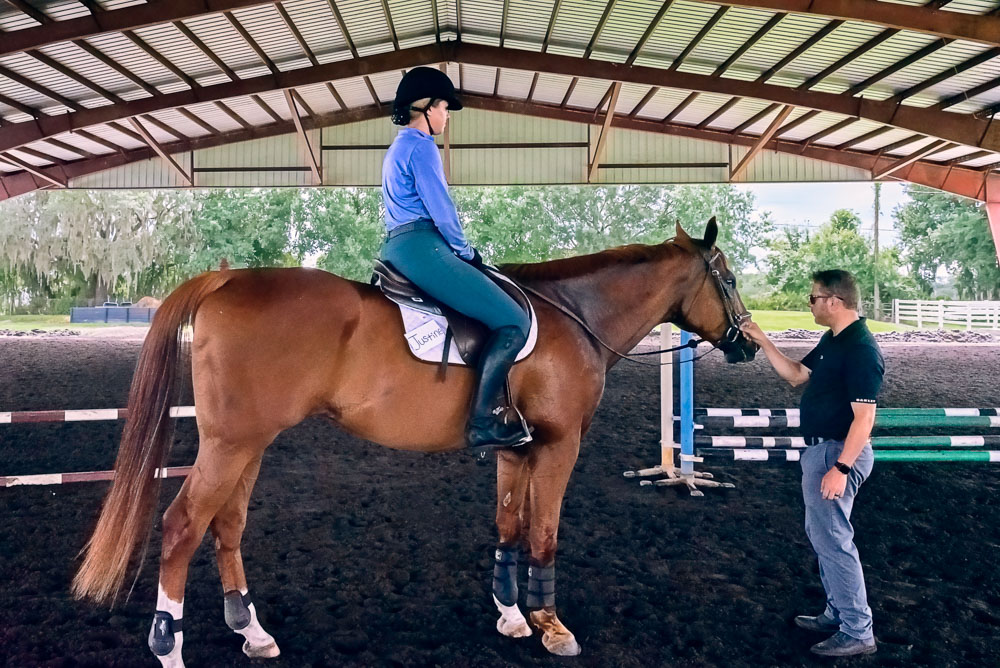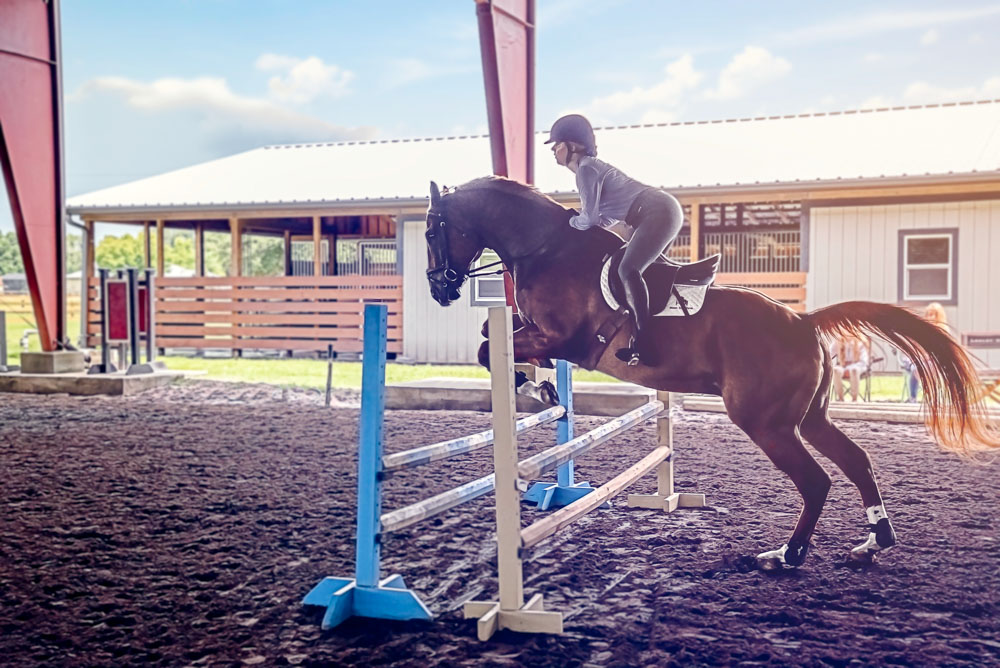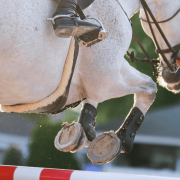Stop Micromanaging: Takeaways From The German Riding Instructor

Maybe you’ve heard of him, Ronny Riemer, a grand prix show jumper based in Ocala, Fla. Or maybe you know him from the Internet as “The German Riding Instructor”, and the funny, often silly, viral videos he posts.
Ronny is both hilarious and serious as a trainer and clinician. He brings a unique blend of European and American riding styles to his instruction. I got to experience this first hand recently, at a two-day show jumping clinic hosted at Lesley Cox Equestrian just outside of Tampa, Fla. And boy, did I learn a lot.
Here are some the principles Ronny instilled in me and the rest of the riders over the weekend that are useful in any arena, and for riders with any goal (or no goals) in mind.
1. Get Out Of The Damn Way.
This is a concept Ronny drills home a lot. “I try to explain, don’t be the biggest burden to your horse while you ride,” he told Heels Down previously. “You just want to be a guiding tool for your horse in show jumping. You want to keep a nice forward rhythm, and let the horse do its job.” For me, that meant letting go of the death grip I instinctively have on my left rein like it’s the emergency break or something. And instead, keeping my hands soft, even, and in-line with my horse’s withers to encourage a straight approach to the jump.

For other riders, it meant stop micromanaging. Instead of coming out of the corner and half-halting all way to the first fence of the line, Ronny encouraged us to send our horses forward, and to maintain that rhythm in order to find the smoothest and straightest distance.
2. Stop Worrying About The Frame.
While the two-day jumping clinic focused on polework, gymnastics and courses, Ronny coached us through our warm-up flatwork, too. And honestly, what I learned from Ronny about the warm-up was just as important as anything else. “You see José bring the horse to the mounting block in the warm-up, and the rider gets on and tugs on the reins to put their horses in a frame,” Ronny described. This does nothing for the rider or the horse.
All throughout the weekend, “soft hands” was Ronny’s mantra. Specifically in the warm-up, he likes to see the horse going forward in his gaits and using himself before being asked to bring his head down. Only once the horse is physically warmed up properly, and tracking appropriately, does it make sense to push a horse into the contact and on the bit.
3. Ride Well For Your Horse, Not For The Ribbon.
Riders who put in a solid, smooth round over a course of fences should feel good about it, because it means they did right by their horse. They shouldn’t gauge their success by who pins what in a class, Ronny said. We should strive to be better riders in order to give our horses a better round. This all comes back to getting of the horse’s way, of course.
Listen To The Heels Down Happy Hour Podcast 42: Weird Horse Girls & The German Riding Instructor
4. You Don’t Need To Jump Every Day To Be Good At Jumping.
Out of the two days I spent at the clinic, the day we worked on ground pole exercises was the toughest. The questions were more complex, even if they weren’t as physically demanding. The principles we worked on through these pole grids were reinforced the next day when we able to put them to use over courses. But it was a solid reminder that I could work on sharpening all the tools I need for over fences work with just a few ground rails at home.

5. Everybody Sucks Sometimes.
Yes, even Beezie and McLain. Understanding and accepting that you’re probably going to ride an awkward distance every now and again is step one. Step two is actually doing something about it. We worked through a five-stride bending line where I flubbed the first fence, and my horse over-jumped it, eating up a lot of ground as I tried to re-balance for the second fence. Instead of taking that energy and flubbing up the second fence, I sat up, asked my horse to wait, and really relied on the “bend” in the line to give us more room to smoothly come out over the second jump. The moral of the story is: don’t give up when the going gets tough. Ronny pushed me to be a problem solver, and look for simple solutions in the moment.


